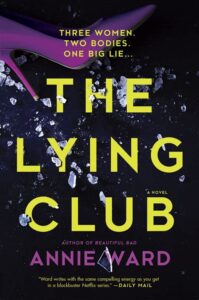During my awkward teenage years, I produced a lot of angst-ridden poetry on topics such as boredom and unrequited love. I kept those poems in a trunk with a stack of short stories that were also about things that seemed important to teenage me, like the unfairness of parents and teachers. I always thought that one day I would try to write a novel. I never once aspired to be a screenwriter in the glamorous world of film. It simply didn’t occur to me.
Until I moved to Los Angeles.
I escaped Kansas for California, where my older brother lived. He’d left a few years earlier to pursue a career in acting. At first, I had no interest in his obsession, the television and film business. My original plan had been to get accepted to UC Berkeley, where I would be able to wear long skirts and sandals, hover around musicians playing bongo drums in the quad, read and write poetry, and generally be arty and enlightened.
Berkeley did not want me. As it turned out, UCLA did. I relinquished my dream of becoming a northern California hippie. Instead, I moved into a dorm adjacent to the addictive splendor of Beverly Hills. Hollywood was a short cab ride away. It didn’t take me long, as an idealistic and somewhat ambitious newcomer, to pivot from poetry and patchouli to screenwriting and martinis.
Film fever is a bug that has bitten a lot of novelists over the years. Agatha Christie, F. Scott Fitzgerald, William Faulkner, John Steinbeck and Joan Didion all answered the call of Hollywood, writing screenplays long after their reputations as novelists were well secured.
More recently, literary big-timers such as Dave Eggers, Gillian Flynn and Margaret Atwood successfully established themselves as uber-successful novelists who then proved they could also write for the screen.
For some people, it might seem simple. Writers write, and all that. However, the process of writing a novel versus the process of writing a script are very different. While writers of fiction do have industry parameters, the rules are not as limiting as the ones that apply to traditional screenwriting.
Susan Walter, a veteran and award-winning screenwriter who just published her first novel, GOOD AS DEAD in 2021, recently described her experience switching between formats in a way that resonated with me. She said, “Novels are much more indulgent—you can (must?) explore your character’s’ inner thoughts, describe what they see, hear, feel, remember, desire, regret, fear, anticipate. Screenwriting had trained me to keep these things off the page. I think the goal of storytelling is to make people care, and when writing novels, you definitely have more tools. It just takes a little courage to use them.”
After graduating from UCLA, I was accepted into the master’s program at the American Film Institute in Hollywood. Within a few months of starting my courses there, I’d learned the basic rules. Use the proper software. Use the proper font. Do not exceed 120 pages and if you do, forget it and go home to Kansas. Dialogue and action are everything. You are writing a blueprint. You are a cog in a machine, but it is a beautiful machine that will ultimately combine the efforts of hundreds of other artists (editors, composers, production designers, makeup artists, costume designers, actors, and on and on) along with yours to cooperatively create something magnificent.
This was all fascinating, but after two years of immersion in film analysis and writing workshops, I started to get frustrated. I felt overly confined by the format.
Many writers would disagree. Lindsay Moran, author of the bestselling memoir BLOWING MY COVER has collaborated with me on several screenplays, and she said this about the experience; “I am a rule breaker by nature, but when writing screenplays, I found the necessity to conform to structure refreshing in some ways. I love writing dialogue. Focusing on using dialogue to move the plot forward is challenging, but the results are rewarding.”
After finishing my master’s, I decided to take a break from screenwriting and started my first novel. I felt immediately more comfortable writing books than screenplays. Working with broader boundaries was exhilarating, and I acknowledged that for me, screenwriting had always seemed almost mathematical. How many pages are there between event A and event B? Flip through your script and make sure there is an appropriate amount of text versus white space. How does your dialogue column look?
Danielle Trussoni, bestselling author of many books, but most recently THE ANCESTOR, commented that, “I have written a few spec pilots, a feature and ten episodes of an audio drama that was an adaptation of my novel THE ANCESTOR. I love the intense concentration of form and rhythm in screenwriting, but I always return to writing fiction. The huge canvas of a novel is what my imagination needs.”
I tend to agree.
However, a few years after I began writing novels, a funny thing happened. I discovered that by combining what I’d learned from the craft of traditional screenwriting with the freedom of fiction, I was writing more descriptively with an emphasis on thoughts and feelings, and yet managing to remain structured and succinct. My screenwriting training had forced me to learn to reveal story through dialogue and action. It had reigned in my life-long tendency to digress. I could hear my instructor’s voice whispering in my ear, “Get to the point. Show don’t tell. Where is the conflict? Keep it moving.”
Now, every once in a while, I write a screenplay for a change of pace, but I do prefer the satisfaction of the novel as a final product. Understanding the difference between screenplays and novels was crucial learning for me, and I believe it makes me a more well-rounded writer. Now, if I decide to break the rules, I know I’m doing it, and I know why I’m doing it.
***


















